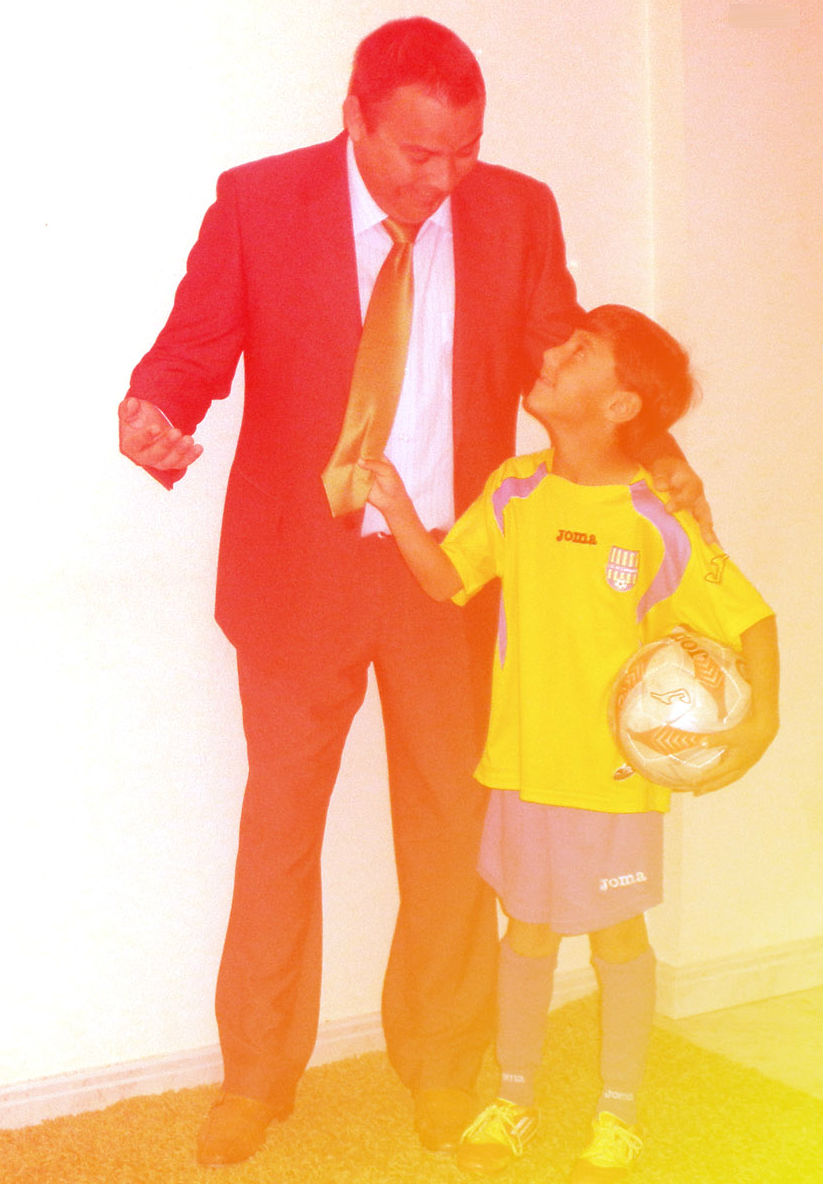Urbincasa would like to invite you to meet José Luis Ayuso, director of the company’s Technical, Quality and Innovation Department. He addresses several current topics in the interview, including the challenges of construction and market trends, where the role of technology, including artificial intelligence, plays a key role. He also reflects on Urbincasa’s trajectory and success.

We can see how the availability of workers and the general challenges faced by the construction sector (lack of materials, increase in costs, etc.) are changing the day-to-day activity of companies. What is Urbincasa doing to adapt to this situation?
At Urbincasa, we are very aware of this widespread problem, which is especially serious in the kinds of coastal areas in which we regularly work. There is a great shortage of qualified labour and this, in addition to causing a significant increase in quality controls, produces cost overruns and delays in deadlines.
In our dealings and contracts with construction companies, we try to ensure that work schedules take into account the steps necessary to purchase materials and hire workers. Our project directors and construction managers monitor all aspects of implementation and are absolutely aware of the importance of meeting partial milestones, which is why follow-up meetings are held weekly. Even so, we continue to experience significant deviations in partial and final deadlines. Meeting deadlines is our main goal at present.
To resolve this situation, we are working with a specialised company on a pilot project based on the Lean Construction work system using the LAST PLANNER SYSTEM method. Each team involved in a project must commit to, monitor and comply with the deadlines and time scales assigned during construction.
The idea is to implement this protocol in all Urbincasa developments by training our technical team and the teams of external construction companies, making compliance with this work system an essential filter for hiring.
“Our 56 years of market experience is a solid guarantee of quality”
The imbalance between supply and demand conditions the functioning of the residential market. In your opinion, how could the supply of residential housing be improved?
The public sector should stay informed and take appropriate measures to facilitate the greater availability of buildable land. Administrations, especially local ones, should also speed up licensing deadlines, which are generally excessively long.
What challenges are faced by the construction sector as regards employment?
The labour market for construction is experiencing serious shortages of trained staff in the different trades. During the 2008 crisis, many professional workers changed their activity and have not returned to the sector or have retired, little staff has been trained on the construction sites themselves. Moreover, the vocational training and workshop schools no longer work as well as they once did. The government is partially to blame for this, but so too is the fact that young people do not want to work in construction, even though it is currently quite well paid. Many of the jobs are quite demanding and younger generations prefer to look for work in other sectors. The trend is towards fewer and fewer young people on construction sites.
Although we should not generalise, those of us who have been in the sector for years agree that commitment, pleasure and pride in a job well done, as well as respect for the work of others, are disappearing at an alarming rate. This causes serious problems in construction.

In your experience, what kinds of renovations do clients look for in new construction projects?
Most requests have to do with improvements in the electrical installation, that is, in the number of sockets or changes in position. At Urbincasa, we have hardly experienced changes in terms of interior distribution, and we always strive for an intelligent, well-researched and highly refined design that is able to meet the needs of the general public.
Clients sometimes also ask us to alter furniture and kitchen installations, switch the shower for a bathtub, make changes to appliances and cabinets, and undertake other very specific renovations.
In single-family homes that have a basement, we do carry out important renovations, adapting these to the needs and uses of the owners. Nationality and very diverse customs come into play here. We try to adapt to the lifestyle of each client where possible.
“I believe that our current developments, the vast majority of which are second homes, have excellent locations, very close to the sea, with attractive designs and highly optimized interior layouts”
What are the market trends in terms of new housing? What factors are involved?
Economically, as we know, the real estate market is suffering a slowdown. More expensive mortgages, high inflation and the tightening of banks’ conditions for granting mortgages mean that there are fewer people with the capacity to purchase new housing, especially with regard to a second home, which represents the largest part of our housing offer.

What value do buyers place on the energy efficiency of the home? How does this affect Urbincasa when approaching a project?
Logically, energy efficiency is a very interesting topic for today’s buyers. In recent times, we have experienced sharp increases in electricity and gas bills, even requiring state interventions in this regard, which is why people are very aware and concerned. We are always striving to improve our home design to save our clients money on their bills.
For all these reasons, Urbincasa has worked on our exterior carpentry to provide better insulation and reduce energy consumption. We have also included aerothermal systems for the production of hot water and/or air conditioning, as well as more efficient appliances. Another noteworthy measure is Urbincasa’s environmental policy, which reduces our carbon footprint in Spain through reforestation.
The construction managers and project directors are also responsible for a waste management plan in the initial phase of the project.
How has the style of residential construction changed in recent years?
It has changed a lot. Families, their needs, their economic level and the large number of foreign nationals who buy homes in Spain have changed the design of the product. The family model is smaller, while the quality of the construction and materials, the thermal and acoustic insulation and the furnishing of the facilities are now much better. This is largely a result of more demanding construction regulations.
The common services are very complete and sometimes especially sophisticated. Today, it is almost unthinkable to build a residential complex without a swimming pool, sports areas, a co-working room or a gym, conveniences that you could previously only find in luxury hotels.
 What would you highlight about the projects that Urbincasa currently has underway?
What would you highlight about the projects that Urbincasa currently has underway?
I believe that our current developments, the vast majority of which are second homes, have excellent locations, very close to the sea, with attractive designs and highly optimized interior layouts.
The community facilities, which include swimming pools, green areas and gyms, are also very complete and in some cases exceptional. I believe that our clients can consider their expectations to have been met.
Our 56 years of market experience is a solid guarantee of quality. In any sector, especially in housing development where there have been so many fluctuations and opportunism depending on economic cycles, established and long-standing companies like Urbincasa are few and far between. Our success is down to perseverance, hard work and astute business decisions, but also to coping with bad and very bad cycles and knowing how to meet clients’ needs. Otherwise, we would not have come this far and Urbincasa would not have the great prestige it has today.
AI applied to construction can bring great advantages. Could you tell us a practical example of how Urbincasa uses this and/or other technologies?
and/or other technologies?
Technological advances are really being felt in the design stage. BIM technology in project writing to predict design conflicts and possible solutions has now become widespread.
It is also being implemented in the industrial production of some of the elements that we use on the building site and in monitoring, for example, with drone flights to improve worker safety through analysis and learning. In this field, there are technology companies that are developing safety vests that inform the operator of the risks in their work environment to avoid accidents.
At Urbincasa, we are studying the possibility of incorporating industrialised construction elements into our developments, such as bathrooms, which are manufactured completely finished. These are faster to install and also involve a more sustainable and environmentally friendly process.
3D printing is already used, not only in the manufacture of small parts but even in the construction of homes. In fact, there are printers that allow homes to be built with earth, which entails ease, speed, savings and eco-sustainability. We can only imagine what this could mean in developing countries.
As is the case in other sectors, we cannot even fathom the potential applications at present. They say that AI is going to change the world as we know it; well, it already has.
At Urbincasa, we are using very interesting sales technology. For example, potential clients can view very attractive interactive presentations and see all the information necessary to choose a home.
Now we want to get to know you a little better…
What is the first thing you do when you get home?
Take off my shoes. I always used to have housework to do when I got through the door, but my home routines have changed a lot. In a very short time, we have gone from having three children at home to having none. They have left the nest, so I am coming back to activities I used to love like reading.
What is your favorite corner of the house?
My reading chair. It is a particularly comfortable piece of furniture and has the perfect location next to a large window.
What does your home smell like?
It usually smells like eucalyptus leaves; my wife likes them and is always bringing new ones home.
What do you love to do most at home?
Invite people to lunch or dinner. We love having guests and after-dinner meals with family and/or friends are often great moments.


 Trovit – The meta search engine
Trovit – The meta search engine Houzz – Decoration for your home
Houzz – Decoration for your home Home – Offers to decorate your home and save money
Home – Offers to decorate your home and save money






